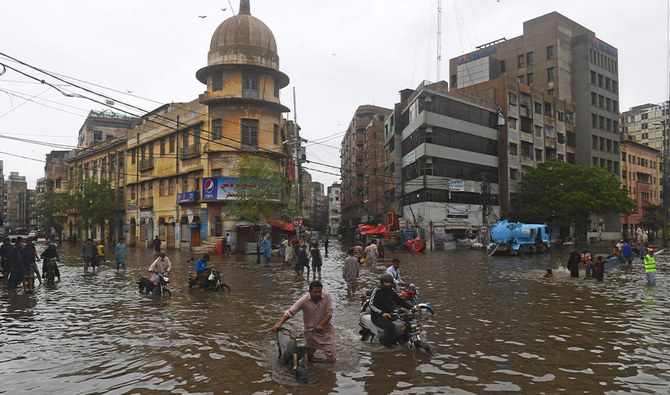ISLAMABAD: The government has announced “monsoon emergency” in Pakistan after the country experienced heavy rainfall in recent weeks and witnessed flash floods in different areas that claimed hundreds of lives and destroyed infrastructure.
According to the official statistics compiled by the National Disaster Management Authority (NDMA), at least 550 people have lost their lives in rains since the beginning of the monsoon season in mid-June.
The Pakistan Meteorological Department (PMD) also announced on Saturday the country was likely to be lashed with more rains in the coming weeks that were going to trigger floods in several areas, including the southwestern Balochistan province and Karachi city.
“Pakistan’s cabinet has declared a monsoon emergency but now we need to brace for the next round of rain torrents,” federal minister for climate change Sherry Rehman said in a Twitter post on Friday night.
She informed the decision was going to be implemented from Saturday.
“All provinces and district administrations, NDMA & PDMAs need to act now to take as many preventive measures as possible,” Rehman added.
The climate change minister urged people to be cautious while going out in rain.
“Travelers and tourists too should plan their trips according to updates from PMD,” she noted. “Many areas of Balochistan, Sindh [are] still waterlogged. Rain may also trigger landslides in hilly areas like Kashmir, Murree, KP [Khyber Pakhtunkhwa].”
The NDMA said in a Twitter post on Friday 133 percent more rainfall was witnessed across the country in comparison to its 30-year average record.
Mentioning the worst hit areas in the country, it said that Balochistan and Sindh received 305 and 218 percent more rain, respectively, during the ongoing monsoon season.
The Pakistan army and other government agencies have set up aid and relief camps in flood-affection regions where they have been relocating families to safer places.
The country also witnessed heavy rains and floods in 2010 which affected the lives of nearly 20 million in the country. The damage to the national infrastructure ran into billions of dollars back then. Huge swathes of crops were also destroyed as one-fifth of the country was inundated.




















